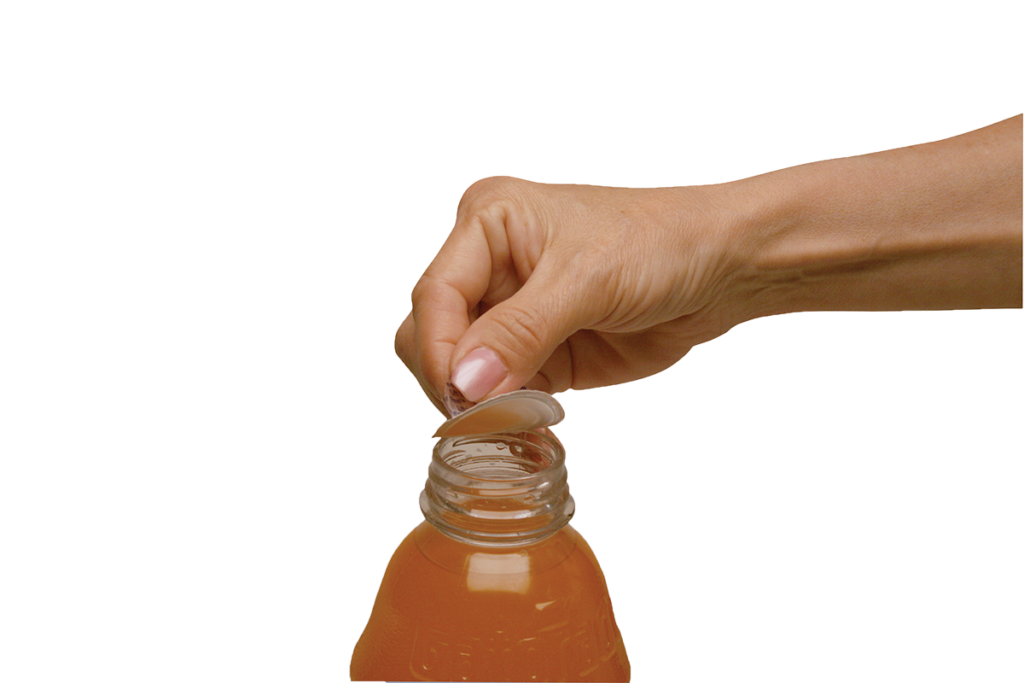Darren Dodd, service and marketing director at Selig, discusses how the environmental agenda is bringing into question how beverage companies use packaging seals in their production processes
THE environmental agenda is driving change in all areas of packaging, from Morrisons own-label milk cartons to Coca-Cola’s move to tethering caps on disposable PET bottles.
As well as looking at lightweighting and tethering, increasingly packaging designers are wanting simpler closure solutions that offer mono-material liners. This is an excellent idea in theory, but in practice, things aren’t quite as simple.
Packaging seal successes
A well-sealed product means shelf-life expansion, reduced wastage, and tamper evidence possibilities. These are three of the main reasons that a sealing method known as ‘induction heat sealing’ has grown in both size and importance across the globe with beverage and food producers alike, over the past few decades.
Induction heat sealing’s success lies in its use of a laminated structure – or liner – to apply a hermetic seal over the mouth of a container.
Once the cap is applied to a container, aluminium foil within the liner is heated by induction heat sealing, causing a layer of heat seal material to bond securely to the rim (also known as the land area) of the container, creating a strong airtight seal.
All change?
However, despite induction heat sealing being able to meet the challenges presented by many wide and varied hospitality and retail beverage requirements, environmental pressures are driving a shift in the materials used in the liners. At present, many induction heat seal liners used on bottles and closures within caps are made from multiple materials. They can be recycled using chemical recycling but need to be separated from the container to allow the full package to be fed into the recycle stream.
With this in mind, there is growing demand for common materials for the container and the seal, to ensure it can be recycled as a whole. To do this, the humble liner is being re-envisioned. The challenge is now on to develop liners that are simpler, more recyclable and contain more recycled content, whilst also continuing to protect consumers from spoilage and leakage.
Responding to the challenge
Selig is working with customers to improve recyclability in a number of ways:
First matching liners with the products that they are being supplied in, so that no residual foreign material is left on the container or cap. Taking coffee as an example, more and more producers are opting to switch the board back liner – which is found in the coffee’s plastic cap – with a plastic one that matches the cap, so it doesn’t contaminate the recycling stream.
Secondly, the way that the liner seal separates from the container is being adjusted to ensure that clean removal is possible. Taking fruit juice liners as an example this makes the container easier to recycle, without contamination, as well as the cap.
Thirdly, Selig is working to take the recycling concept a step further, aiming to develop ways to help create a ‘mono-material whole product’. This means creating PE liners for PE bottles, PET liners for PET bottles etc. However, developing ‘mono-material whole products’ that include a liner, aren’t as straightforward as they sound, particularly because laminated liners offer specific sealing and production line speed benefits that end users and producers alike have come to expect.
As can be seen, it looks like retailers, producers and beverage packaging manufacturers will still have to navigate a range of challenges when it comes to deciding where the boundary lines are for packaging recycling and functionality.
However, with consumer pressure for sustainable solutions continually on the rise, the stakes are high and the risk of failure costly – even when it comes to the humble sealed liner.













